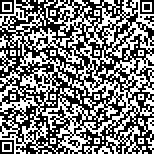| Quote
: |
谢芬,张泓,周艳华,向娟,张秀兰,黎晶晶.电针结合运动想象疗法对宫颈癌术后尿潴留患者尿动力学及生活质量的影响研究[J].湖南中医药大学学报英文版,2023,43(4):712-717.[Click to copy
] |
|
| |
|
|
| This paper
:Browser 2943times Download 1176times |
| 电针结合运动想象疗法对宫颈癌术后尿潴留患者尿动力学及生活质量的影响研究 |
| 谢芬,张泓,周艳华,向娟,张秀兰,黎晶晶 |
| (湖南中医药大学, 湖南 长沙 410208;中南大学湘雅三医院, 湖南 长沙 410013) |
| 摘要: |
| 目的 探究电针治疗结合运动想象疗法对宫颈癌术后尿潴留的干预效果。方法 选取2020年1月至2021年1月收治的60例手术治疗的宫颈癌患者,随机分为两组(每组30例),对照组采取电针治疗,研究组采取电针结合运动想象疗法。比较两组患者恢复自主排尿间隔时间及尿量,对比干预前后两组患者的尿动力学参数[包括最大尿流率(maximum flow rate, Qmax)、平均尿流率(average flow rate, AFR)、膀胱最大容量]、残余尿量及生存质量(包括功能领域、症状领域、总体健康领域和单项量表评分)。结果 治疗有效率研究组稍高于对照组,但差异无统计学意义(P>0.05)。干预后,两组患者的Qmax、AFR、膀胱最大容量、功能领域及总体健康领域评分均较干预前显著增加(P<0.05),残余尿量、症状领域及单项量表评分均较干预前显著减少(P<0.05)。研究组开始治疗至恢复自主排尿时间短于对照组且恢复自主排尿时尿量大于对照组(P<0.05);干预后,研究组Qmax、AFR、膀胱最大容量、功能领域及总体健康领域评分均高于对照组(P<0.05),残余尿量、症状领域及单项量表评分均低于对照组(P<0.05)。结论 电针结合运动想象疗法干预宫颈癌术后尿潴留患者,能有效提升Qmax与AFR,增加膀胱最大容量,降低残余尿量,促进患者生存质量提升。 |
| 关键词: 电针 运动想象疗法 宫颈癌术后 尿潴留 最大尿流率 平均尿流率 残余尿量 |
| DOI:10.3969/j.issn.1674-070X.2023.04.022 |
| Received:December 16, 2022 |
| 基金项目:湖南省自然科学基金项目(2022JJ30036)。 |
|
| Effects of electroacupuncture combined with motor imaginary therapy on urodynamics and life quality in patients with urinary retention after cervical cancer surgery |
| XIE Fen,ZHANG Hong,ZHOU Yanhua,XIANG Juan,ZHANG Xiulan,LI Jingjing |
| (Hunan University of Chinese Medicine, Changsha, Hunan 410208, China;The Third Xiangya Hospital of Central South Univesity, Changsha, Hunan 410013, China) |
| Abstract: |
| Objective To explore the intervention effects of electroacupuncture combined with motor imagery therapy on urinary retention after cervical cancer surgery.Methods Sixty patients with cervical cancer who underwent surgical treatment from January 2020 to January 2021 were randomly divided into control group and study group, with 30 cases in each group. The control group received electroacupuncture, while the study group received electroacupuncture combined with motor imaginary therapy. The interval time of spontaneous urination and urine volume were compared between two groups. Moreover, the urodynamic parameters [including maximum flow rate (Qmax), average flow rate (AFR), maximum bladder volume], residual urine volume, and life quality (including functional areas, symptom areas, overall health areas, and individual scale scores) of two groups were also compared before and after intervention.Results The effective rate of treatment in study group was slightly higher than that in control group, but the difference was not statistically significant (P>0.05). After intervention, the scores of Qmax, AFR, maximum bladder volume, functional, and overall health areas in both groups were significantly higher (P<0.05), while the scores of residual urine volume, symptom areas, and single scale were significantly lower (P<0.05). The time from the beginning of treatment to the restoration of spontaneous urination was shorter and the urine volume was greater in the study group compared with the control group (P<0.05); after intervention, the scores of Qmax, AFR, maximum bladder volume, functional and overall health areas were higher (P<0.05), but the scores of residual urine volume, symptom areas, and single scale were lower in study group compared with control group (P<0.05).Conclusion Electroacupuncture combined with motor imagery therapy can effectively improve Qmax and AFR, increase the maximum bladder volume, reduce residual urine volume, and promote the life quality of patients with urinary retention after cervical cancer surgery. |
| Key words: electroacupuncture motor imagery therapy after cervical cancer surgery urinary retention maximum flow rate average flow rate residual urine volume |
|

二维码(扫一下试试看!) |
|
|
|
|


